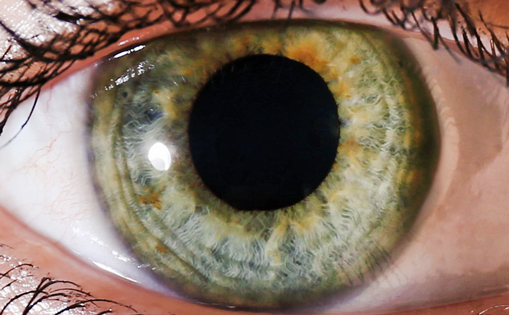Cataract surgery is the most common surgery performed in the US and the number of cataract procedures is estimated to grow exponentially as the baby-boomer generation ages.1 Enhanced technology has resulted in ever-increasing patient expectations of comfort and rapid visual rehabilitation following surgery. Inflammation following cataract surgery can result in pain and slowed visual recovery, which has been associated with the development of macular edema leading to irreversible compromises in visual acuities and contrast sensitivity.2,3
Cataract surgery is the most common surgery performed in the US and the number of cataract procedures is estimated to grow exponentially as the baby-boomer generation ages.1 Enhanced technology has resulted in ever-increasing patient expectations of comfort and rapid visual rehabilitation following surgery. Inflammation following cataract surgery can result in pain and slowed visual recovery, which has been associated with the development of macular edema leading to irreversible compromises in visual acuities and contrast sensitivity.2,3
Bromfenac sodium hydrate ophthalmic solution 0.1 %, originally approved in Japan in 2000 for twice-daily dosing, is the only topical non-steroidal anti-inflammatory drug (NSAID) that is halogenated. The addition of the bromine atom at the 4-position of the benzoyl ring enhances corneal penetration and increases potency in binding the inducible enzyme cyclooxygenase-2 (COX-2) within the arachidonic acid cascade (see Figure 1).4 The COX-2 enzyme mediates the transformation of arachidonic acid into the prostaglandins responsible for the inflammatory response following surgical or other kinds of trauma.
Clinical Trial Data
The pivotal trials for bromfenac (BROMDAY™, ISTA Pharmaceuticals, Inc., Irvine, CA) consisted of two placebo-controlled phase III trials.5,6 A total number of 455 patients were enrolled in these two studies, which evaluated the percentage of patients who achieved a summed ocular inflammation score (SOIS) of 0 (no cells, no flare) at day 15 post-operatively and, secondarily, the absence of ocular pain in patient diaries and a seven-point subjective assessment of patient comfort. Bromfenac is the only topical NSAID to employ a standardized comfort scale in its Food and Drug Administration trials.
Bromfenac Once-daily for Post-operative Ocular Inflammation and Pain
During the trial assessing once-daily dosing of bromfenac ophthalmic solution 0.09 % for post-operative ocular inflammation and pain,5 patients received no corticosteroids or exogenous NSAIDs prior to, on the day of, or after surgery. Subjects received one drop of study medication on the day prior to surgery, one drop on the day of surgery, and one drop per day for the first 14 days post-operatively. The mean SOIS was significantly lower in the bromfenac group compared to placebo (p<0.0001) at days 3, 8 ,15, and 22. At day 15, there was a statistically significant difference in the percentage of patients who achieved an SOIS of 0 (no cells, no flare): the percentage was 46.1 % of patients in the bromfenac group versus 26.2 % of patients who had received placebo (p<0.0001). In the post hoc analysis of SOIS of grade 0 by day 15 using ‘zero-to-trace inflammation’ (0–5 cells with 0 flare), 73.9 % of subjects in the bromfenac 0.09 % group achieved the primary endpoint by day 15 compared to 40.4 % of subjects in the placebo group (p<0.0001) (see Figure 2). The mean SOIS was already statistically significant at day 3, with a widening gap through to day 15.5 Bromfenac is the first and only topical NSAID to employ an ocular comfort grading scale as part of its pivotal data.
A statistically significant difference in pain was seen between the two groups at the first measurement on post-operative day 1. Bromfenac was significantly better than placebo at all time-points. At day 15, nearly 95 % of bromfenac-treated patients were pain-free, versus 70.5 % of patients in the placebo group (see Figure 3). The median time to resolution of pain in the bromfenac subjects was half that in the placebo patients, at two days versus four days. Bromfenac users scored their comfort experience as superior to that of placebo subjects in four of seven parameters, with the other three parameters being equivalently rated by the two groups.5
An integrated data set, composed of this pivotal data, a phase II dosing study and an additional phase III placebo-controlled study, showed consistent results across all study endpoints in a much larger group of patients – i.e., 872 subjects. This integrated data set showed earlier statistical significant in the percentage of patients who achieved an SOIS of 0, which was reached at day 8 rather than at day 15.
Safety and Tolerability
Bromfenac should be used with caution in patients with sulfite sensitivities and, like all NSAIDs, can cause slow or delayed healing, increased bleeding times, and cross-sensitivities with other topical NSAIDs. As a class, topical NSAIDs should be used with caution in patients with corneal compromise. In the bromfenac 0.09 % once-daily pivotal trials, adverse events were mild and occurred in 2–7 % of patients.5,6 Regarding adverse events related to comfort (ocular discomfort, foreign body sensation, and eye pain), the occurrence was less than half in patients who received bromfenac compared with the placebo group, consistent with the analgesic effect of bromfenac.5
Reduced dosing schedules with bromfenac mean that ocular surfaces may benefit, as patients receive half the load of active medication and accompanying preservative.
Comparison of Bromfenac Once-daily with Nepafenac Three Times a Day after Cataract Surgery
In the trial comparing bromfenac ophthalmic solution 0.09 % once-daily with nepafenac 0.1 % three times a day (tid) after cataract surgery,6 a small number of patients were randomized to receive bromfenac once-daily (n=10) or nepafenac tid (n=10). Dosing began three days prior to surgery and was continued through to day 21 post-operatively. In addition to the study NSAIDs, patients received moxifloxacin 0.5 % tid starting three days prior to surgery. Subjects also received intra-operative timolol 0.5 %, prednisolone acetate 1 %, gatifloxacin, and intracameral moxifloxacin as well as post-operative moxifloxacin tid for one week and difluprednate 0.05 % for three weeks. Both groups had similar baseline measurements.
Outcomes for mean letters read, mean changes in macular volume, and retinal thickness were not statistically different between the groups from baseline through to week 6, although, independently, the bromfenac group demonstrated a significant improvement in ETDRS letters gained from baseline to week 6 (p=0.04) (see Table 1). Mean macular volume and mean retinal thickening worsened in the nepafenac group, which showed a statistically significant increase (p<0.01) for macular volume at week 6 compared with baseline (see Figures 4 and 5). In one subject taking nepafenac, the trial was discontinued for lack of efficacy at week 3.
Although both groups demonstrated positive clinical outcomes and similar ETDRS scores, bromfenac subjects showed a trend of enhanced visual outcome, less retinal thickening, and more stable macular volumes overall.6 Further study is recommended to examine these clinical results.
Conclusions
The approval of a once-daily topical NSAID has simplified post-operative regimens following cataract surgery without compromising outcomes. The novel chemical structure of the bromfenac molecule creates rapid and sustained drug levels in vitro that may translate into reduced inflammation and improved clinical outcomes in post-operative cataract patients. Bromfenac is a safe and effective topical NSAID and may help to produce superior visual outcomes by reducing mean macular volume and retinal thickening after uncomplicated cataract surgery. Bromfenac is a comfortable and effective anti-inflammatory agent that has a proven safety profile, allows convenient dosing, and provides rapid pain resolution. ■







